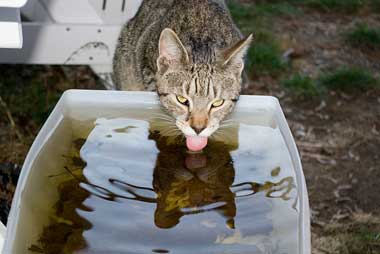Did you know that, similar to our bodies, a cat’s body weight consists of 60 to 70% water? Thus, as with us, important health benefits come from drinking lots of water. Of course, drinking water can prevent dehydration. However, other benefits accrue as well.
Water helps flush toxins from the kidneys and decreases the chance of either kidney or bladder stones. Water aids digestion and helps with the transportation and absorption of nutrients It improves circulation and helps maintain body temperatures. It keeps essential body organs hydrated and healthy, necessary for proper function. These reasons head the list, though you can find others as well.
What Are The Dangers Of Dehydration?
Because a cat can go for a long time without drinking, you may not know kitty has a problem until dehydration has already set in. Signs of dehydration include lethargy, weakness, poor appetite, dry mucous membranes, and if severe, eyes sunken into their sockets.
Dehydration can lead to a series of health problems, including bladder inflammation (cystitis), tumors, ruptured bladder, and stones. These diseases cause increased water loss. Chronic kidney disease, diabetes, vomiting, diarrhea, and hyperthyroidism fall in this category.
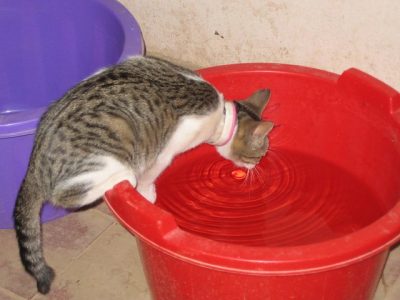
Decreased skin turgor (elasticity) offers a physical indication of dehydration. To test skin turgor, gently lift the skin of the shoulders and determine how long it takes to return to its original position. If a cat enjoys normal hydration, this snapping back should occur almost immediately.
If kitty is dehydrated, it may take much longer for the skin to return to the original position. In some cases, the skin may remain “tented.” Be aware that if you deal with a geriatric cat, the skin may not respond as quickly, even though the cat has sufficient hydration.
Serious Consequences To Health Due To Dehydration
You can find several health risks brought about by dehydration. Included in these are serious electrolyte imbalances, reduction of flow of both blood and oxygen to the body organs, an accumulation of harmful toxins in kitty’s body, and ultimately, death.
Insufficient hydration because of not consuming enough water can lead to a lack of energy, poor organ function, poor skin health, and higher risk for urethral obstruction in male cats. It’s important to make sure kitty gets enough water.
Some Reasons Your Cat Will Not Drink
Cats may stop drinking water or slow down their intake for several reasons. Here are a few:
First, they may already be sufficiently hydrated. Don’t measure their intake against that of a dog, as the cat requires less water.
Perhaps the water bowl isn’t clean enough. A cleanliness-oriented cat may not want to drink from a dirty bowl. Would you?
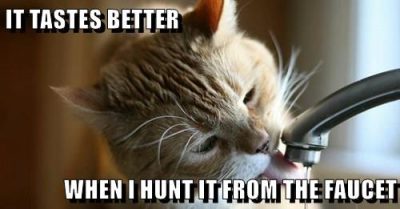
Where have you placed water bowls? Are they in a quiet, cat-friendly place? Put several around the house in suitable locations.
If your cat has tooth or mouth pain, he may stop drinking. Watch for decreased appetite, dropping food when eating, pawing at face or mouth, facial swelling or drooling. Other conditions that cause gastrointestinal upset may cause kitty to decrease water consumption.
How Much Water Should Your Cat Drink?
The Committee on Nutrient Requirements of Dogs And Cats tells us that cats usually drink one ounce of water for every half-ounce of dry food that they eat. According to veterinarians, a normal, healthy cat needs to drink about 1/2 cup (4 ounces) of water daily per five pounds of body weight.
Thus, an average 10-pound cat needs to drink about one cup of water per day. Remember that a cat’s water intake may come from a variety of sources, Besides their water bowl or fountain, if they eat canned food, they get some water that way. They might drink from a running water tap.
I’ve discovered that Mocha gets in the bathtub at times and drinks from the steady leak that comes from the faucet. Fortunately, that’s only one way he drinks, as he most likely would not get enough water from that faucet.
Tips To Get Your Cat To Drink More
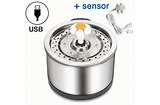
- Choose a bowl that proves comfortable for kitty. Select a bowl that is wide and shallow. Then they can drink without immersing their whole head, and with plenty of room for their whiskers. Your cat might prefer a bowl that you have elevated in some way.
- Plastic bowls do not make a good choice, because they can get scratched, or provide a place where bacteria can hide. Glass, ceramic, or stainless steel can become a good choice.
- Completely fill the bowl, as cats like to drink from a full bowl.
- Don’t place water near the litter box. Also, they might find it more interesting to drink if the water bowl location is not right next to their food bowl.
- If the cat does not care for your tap water, try using bottled water.
- Water and food dishes should be in low traffic areas where kitty can eat/drink undisturbed
- Supply several water bowls throughout the house. Keep them clean and refill daily.
- Add a small amount of water to canned food to make a gravy. You can also try a low-sodium chicken broth containing no onion or garlic.
- Try adding a few ice cubes to the water bowl. Often a cat becomes fascinated by the sound and look of bobbing ice cubes.
- Have you tried a water fountain? Because the water flows constantly, the cat becomes more apt to drink.
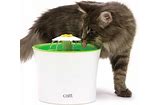
Do Not Give Milk To Your Cat
It’s a myth that you feed a cat by giving it a bowl of milk. Just as with some people, cats are lactose intolerant. So, don’t provide milk for hydration as it can cause vomiting and diarrhea. These issues can make matters worse as they will prevent kitty from drinking and can worsen the dehydration.
When To Call The Vet
If you have tried many ways to get your cat to drink with no success, it might be time to consult the vet. Do so If the decreased water intake becomes paired with other health concerns. These include:
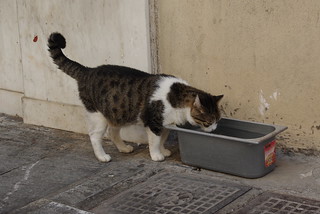
- Dehydration
- Vomiting
- Diarrhea
- Weight Loss
- Lack of appetite
- Lethargy
- Open-mouth breathing
- Decreased or increased litter box visits
Summing It Up
www.petmd.com/how-to-get-your-cat-to-drink-water
Monitor the amount they drink and work to find ways to encourage them to drink more. You can do your cat a huge favor by making sure kitty is fully hydrated.
References I used for this post vet.cornell.edu/departments-centers-and-institutes/cornell-feline-health-center/health-information/feline-health-topics/hydration preventivevet.com/cats/how-much-water-cats-need-tips-for-preventing-dehydration http://www.hillspet.co.uk/cat-care/nutrition-feeding/drinking-water-can-save-your-cats-bladder/

